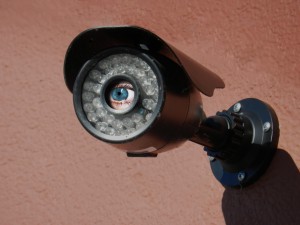 Privacy. Clearly, it’s fleeting in our “tell all,” “share everything on social media” society. As the fine line between the personal and the professional (is there even a line at all?) becomes less and less significant, it’s even more important to be vigilant so you know what you are sharing, with whom and potential consequences. Make no mistake about it: it’s up to you to manage your online identify and privacy.
Privacy. Clearly, it’s fleeting in our “tell all,” “share everything on social media” society. As the fine line between the personal and the professional (is there even a line at all?) becomes less and less significant, it’s even more important to be vigilant so you know what you are sharing, with whom and potential consequences. Make no mistake about it: it’s up to you to manage your online identify and privacy.
One of the main benefits of using social media is it allows you to be found. In fact, it’s a main tenet of social media; your goal online should be to be discovered, and to magnetically attract people you want to hire you for jobs or consulting opportunities. Traditional media outlets would have you believe the worst thing you can do for your career is post information on social media. They feature big mistakes people make online leading to loss of income and jobs as representative reasons to stay offline.
However, for job seekers and business owners, it’s dangerous to don the online equivalent of Harry Potter’s invisibility cloak. Professional goals are difficult to accomplish if privacy settings are locked down to the point they effectively render the profiles useless. However, reducing privacy puts the onus on the user to understand ramifications of not sharing information they make private.
LinkedIn is clearly a key player in your professional online identity. Your goal on LinkedIn is to connect and engage with people; it’s expected that you will have a LinkedIn profile. Generally speaking, the best advice is to peruse privacy settings and choose the most open (least private) choice. Doing so positions you to be found more easily, and potentially to be invited to apply for opportunities. However, each individual user will have specific goals and reasons to share or want to hide certain information online. Overly tight privacy settings on LinkedIn can lead you to miss opportunities. These tips will help. (Tweet this thought.)
Review and scrutinize your choices on these settings in particular:
Turn on/off your activity broadcasts.
If you’re running an illicit job search, and planning to conduct a major overhaul of your LinkedIn profile, turn this off before making changes if you are worried it will alert your current boss. Consider turning it back on after your profile overhaul is complete.
Because LinkedIn will send out a message announcing that you have a new job if you update your job titles or add a project to your “experience” section, others who sometimes get dinged by this setting are people who own businesses and decide to change their official titles or people in jobs who update their job titles to be more descriptive or interesting. The last thing this group wants is for people to think they’ve taken new positions.
Communications.
Be alert and aware of how LinkedIn works by keeping an eye on messages you receive from the network. Check the “Communications” tab under settings to ensure you do receive the type of messages that will help you decide what you want to share with others.
Select what others see when you’ve viewed their profile. If you’re doing some “undercover” research on colleagues or competitors, feel free to set this to “anonymous.” However, leaving the setting locked down prevents you from seeing who is viewing your profile, and that represents lost opportunities. In general, it can be a good idea to let people know you’ve viewed their profile, especially before an interview. It makes you appear to be thorough and diligent about your research.
Select who can see your connections.
Some people worry they’ll compromise their privacy by allowing people to know who is connected to them. If you are in such a cut-throat field that your livelihood is in jeopardy if your connections are revealed, by all means, make this private. However, keep in mind, if everyone locked down this setting, networking on LinkedIn would be severely thwarted.
Change your photo profile and visibility.
This is a non-negotiable: your photo should be viewable for “everyone.” Otherwise, people who may want to learn more about you may be discouraged from reaching out because they see the default “shadow face” LinkedIn inserts in lieu of a picture.
Don’t forget to keep an eye on privacy settings; don’t set them and forget them. Be vigilant and make sure your settings match your goals, and you’ll be more likely to win new opportunities.
Originally appeared on AOLJobs.com.